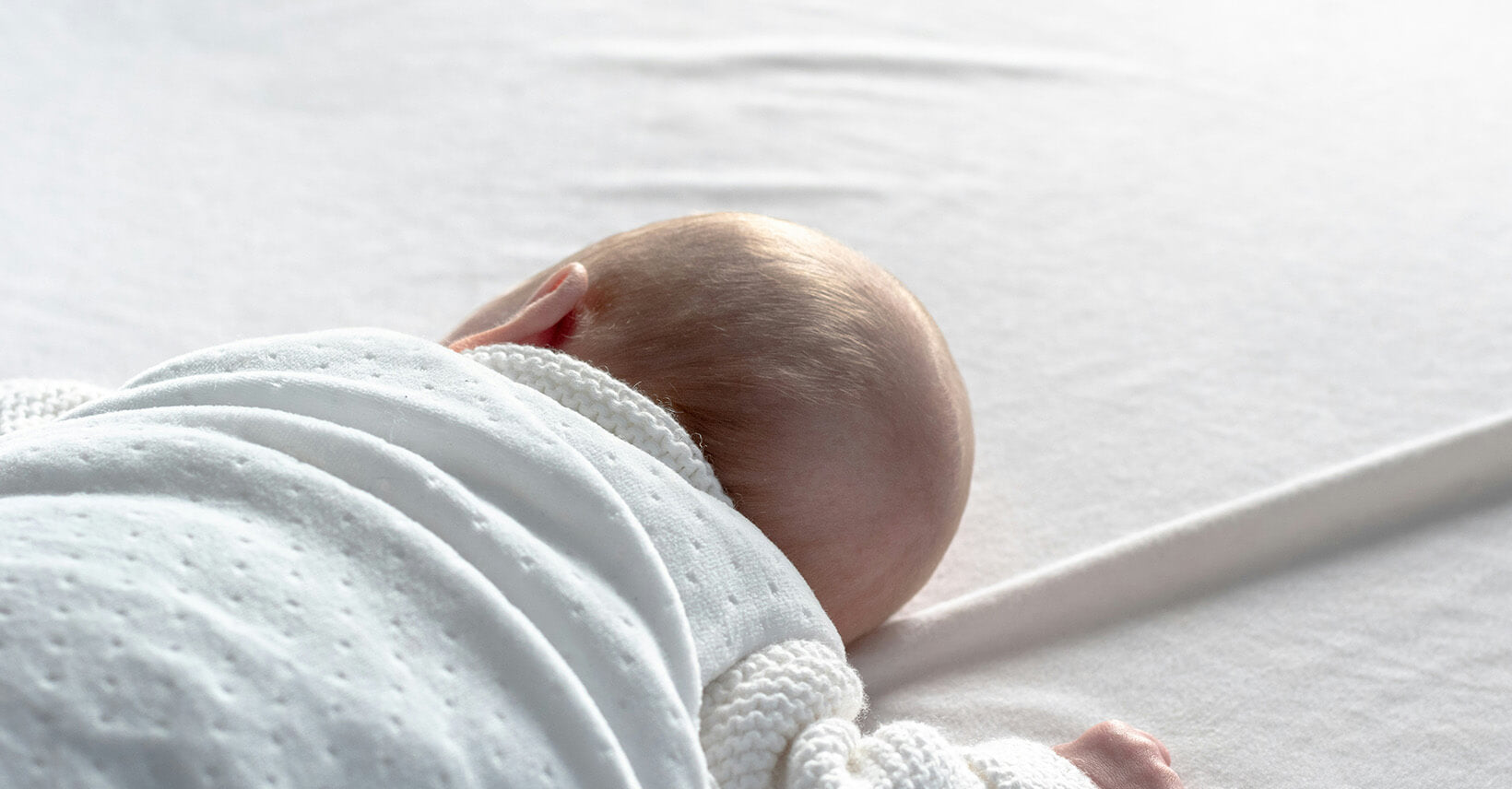


At 6 months old, many babies are developmentally ready to sleep longer at night. Parents can start sleep training their babies, by establishing a consistent bedtime routine and helping their baby learn to fall asleep on his or her own.
Yes, it is possible to sleep-train a 6-month-old baby.
At 6 months old, many babies are ready to learn how to self-soothe and sleep longer at night. Parents can gradually teach their babies to fall asleep independently.
How to sleep train a 6-month-old baby? Here are some strategies:
Parents can start by establishing a routine to calm their babies and signal to them that it's time to go to bed. A common bedtime routine usually includes activities such as:
Don’t forget to be consistent, as doing the same activities in the same order every night will help the baby understand that it's time for bed.
Setting a consistent bedtime helps regulate your baby's internal clock. Parents should choose a time that allows the baby to get enough sleep, usually between, and stick to it every night, even on weekends.
Your baby's sleep environment should be quiet, dark, and cool. Use blackout curtains to keep the room dark and a white noise machine to drown out noises. A comfortable crib with a firm mattress and fitted sheets is also important for safety and comfort.
Sleep training involves putting your baby to bed when he or she is sleepy but awake. Then gradually increase the time to check your baby when he or she cries. This helps the baby learn to self-soothe and fall asleep independently.
Letting your baby cry for a while before offering comfort. Parents can start by letting the baby cry for a few minutes and then gradually extend the time. It is important to soothe babies without picking them up, which helps babies learn to settle down on their own.
Having a regular wake-up time every morning helps regulate your baby's sleep schedule. Parents should wake their babies at the same time every day to help establish a consistent routine and support nighttime sleep training efforts.
The time it takes to sleep train a 6-month-old varies. For some babies, it may take a few nights to a week to adjust to a new routine and start sleeping better. For other babies, it may take a few weeks. Parents should be persistent and patient, as every baby is different and may have different responses to sleep training.
Parents also can use some products to help sleep-train their babies.
White noise machines create a soothing environment for your baby by masking background noises that may disrupt your baby’s sleep. These white noise machines usually have a variety of sounds to choose from, such as rain, ocean waves, and heartbeats, which can calm your baby and help them fall asleep more easily.
Blackout curtains keep your baby's room dark and help signal to your baby that it's time to sleep. By blocking out natural light, these curtains help maintain a stable sleep environment, making it easier for your baby to fall and stay asleep.
Sleep sacks, also known as wearable blankets, are a safe and cozy way to keep your baby warm without the risks of loose blankets. Sleep sacks come in a variety of sizes and materials and help create a cozy, secure feeling that promotes better sleep.

Baby monitors allow parents to monitor their baby without disturbing his or her sleep. Baby monitors allow parents to monitor their baby's sleep environment and check in on them when needed, giving them peace of mind during sleep training.
A crib soother is a crib-mounted device that provides soft lights, sounds, or vibrations to help soothe a baby. These crib soothers are especially useful during the bedtime routine or when your baby wakes up during the night to distract them and help them fall back to sleep.
Humidifiers increase the humidity of the air, which is beneficial to your baby's skin and respiratory system, especially during the dry months. A cozy sleep environment helps improve sleep.
A soft, dim nightlight can provide enough light for nighttime feedings and diaper changes without waking the baby completely. Some nightlights can be adjusted for brightness, and colors (such as red or amber) can also have a calming effect, helping to create an environment conducive to sleep.
In summary, sleep training for your 6-month-old consists of several steps that help establish healthy sleep habits. Parents should develop a soothing bedtime routine for their babies, maintain a comfortable sleep environment, and respond to their babies’ needs without overreacting.
It's important to be patient, as results always take time. Each baby is unique, hence what is effective for one might not be for another.
Consulting a pediatrician can provide individualized guidance. With persistence and love, parents can help their babies develop good sleep patterns and get better rest for the whole family.

Lily Hou
An expert in sleep sack design, is a valued contributor to Kaiya Baby's blog. With a strong background in baby sleep bags and maternal care, she is highly regarded for her professionalism. Lily prioritizes baby comfort and safety in her designs, using high-quality materials. Her insightful articles on sleep bags have been featured in reputable publications and have gained a significant readership. Trust Lily to help you create a comfortable and safe sleep environment for your baby, backed by her proven track record in the industry.
Leave a comment
This site is protected by hCaptcha and the hCaptcha Privacy Policy and Terms of Service apply.